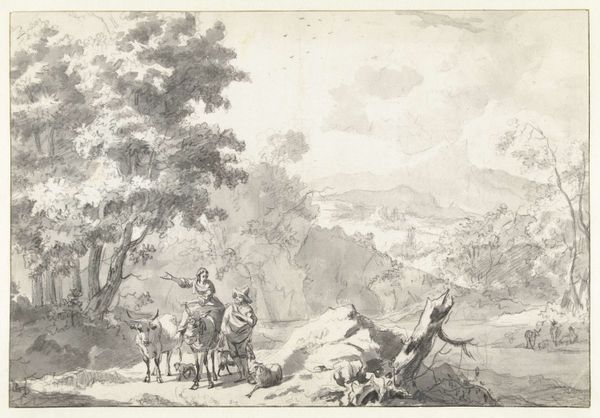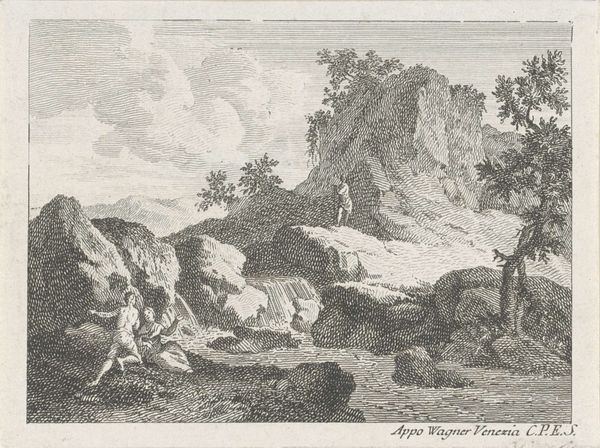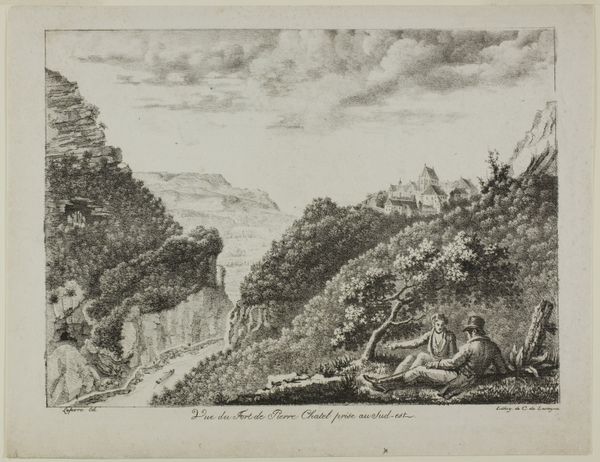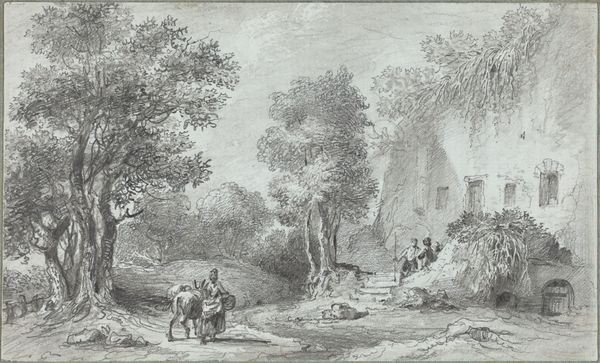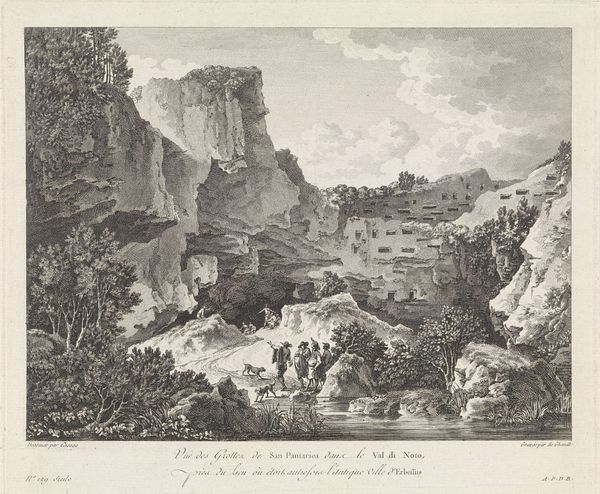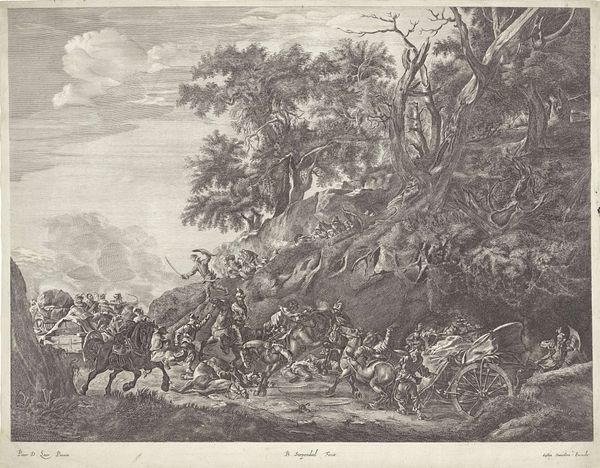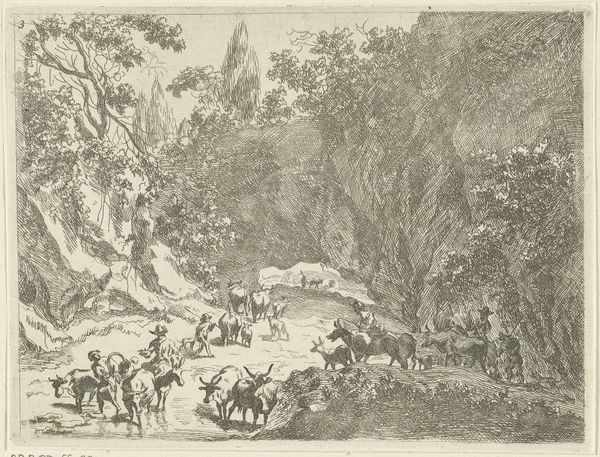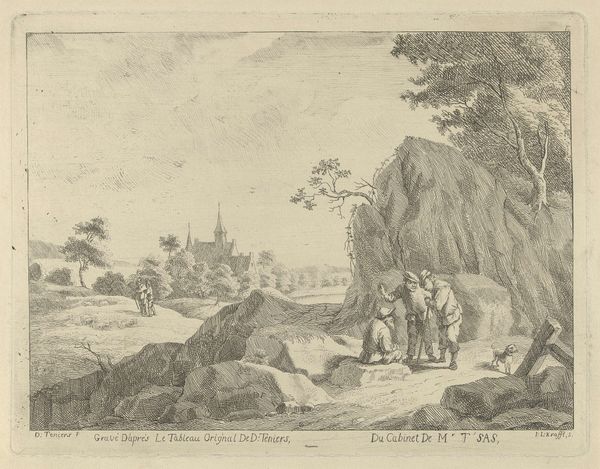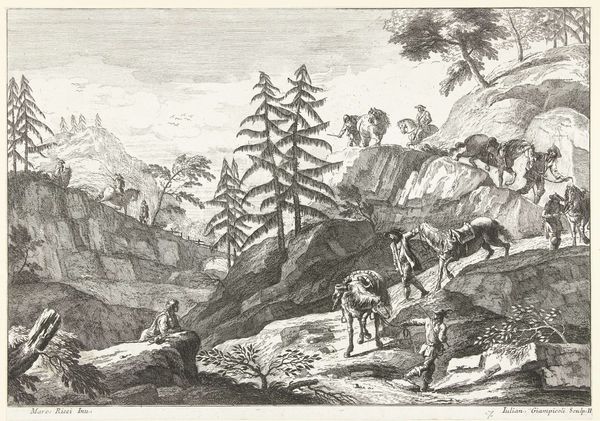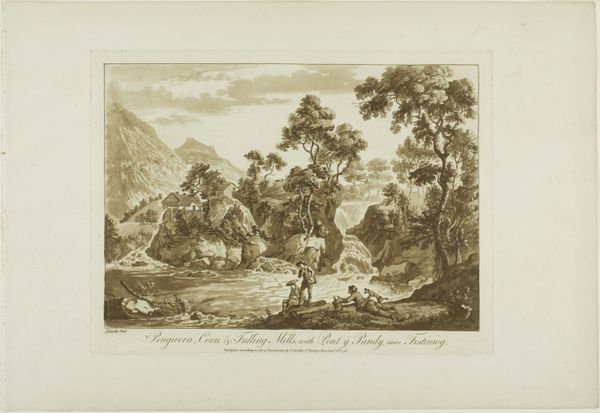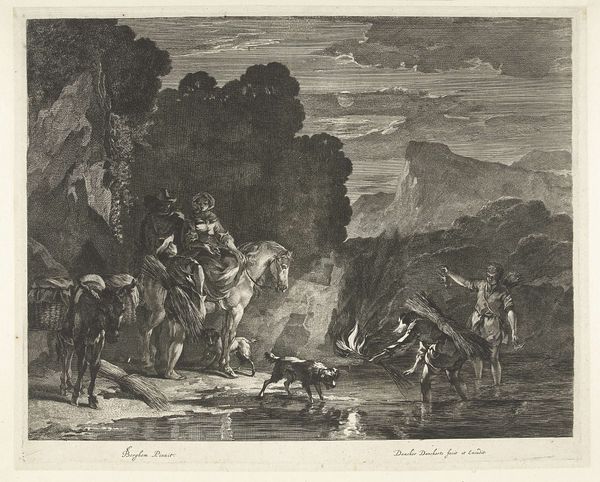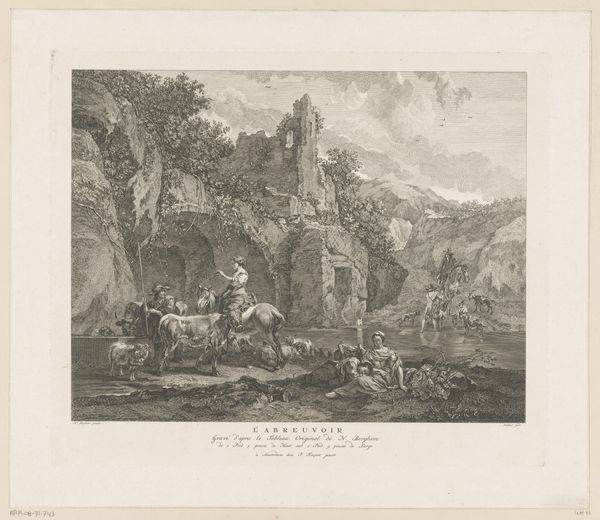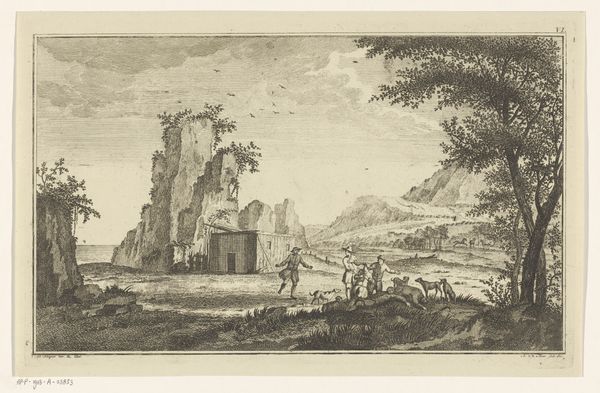
drawing, etching
#
drawing
#
baroque
#
pen sketch
#
etching
#
pencil sketch
#
old engraving style
#
landscape
#
etching
#
genre-painting
Dimensions: height 151 mm, width 197 mm
Copyright: Rijks Museum: Open Domain
Editor: Here we have Johannes Gronsveld's "Berglandschap met herder, herderin en vee," a landscape drawing from between 1679 and 1728. The detail achieved through etching is quite striking; it almost feels like I’m looking at a photograph of the countryside. How would you interpret this work within its historical context? Curator: It’s interesting you see it as photographic, given that photography didn't exist then! This piece speaks volumes about the cultural idealization of rural life during the Baroque era. The careful composition—the herders, the grazing cattle, the majestic, but safe, mountains in the distance— it presents a controlled, romantic vision. Does it remind you of other landscape paintings of the time? Editor: I suppose there is a very controlled quality to the composition... I guess, it is constructed. In that regard, it aligns with some paintings I recall from art history courses, like those by Claude Lorrain. How did the consumption of landscape art factor into shaping society during that time? Curator: Think about who commissioned and consumed these images. Often, it was the urban elite. Landscape art served as a visual escape, offering a curated version of nature that reinforced social hierarchies. The nobility could contemplate idealized pastures while maintaining their distance from the realities of agrarian life. Where does this place the artwork, if the purpose wasn’t only to portrait nature? Editor: So, the artwork actively participated in creating social separation? Curator: Precisely. It aestheticized labor and pastoral settings, removing the grit and struggle to reinforce a specific social order. In what ways do you think contemporary artists engage with this legacy? Editor: That's a fascinating way to consider landscape art. I'll definitely think about that contrast the next time I'm in a gallery. Curator: I agree. I now wonder if and how contemporary landscape artists reflect, perpetuate or question such representations of power structures within this genre. Thank you for making me look at it through your eyes.
Comments
No comments
Be the first to comment and join the conversation on the ultimate creative platform.
